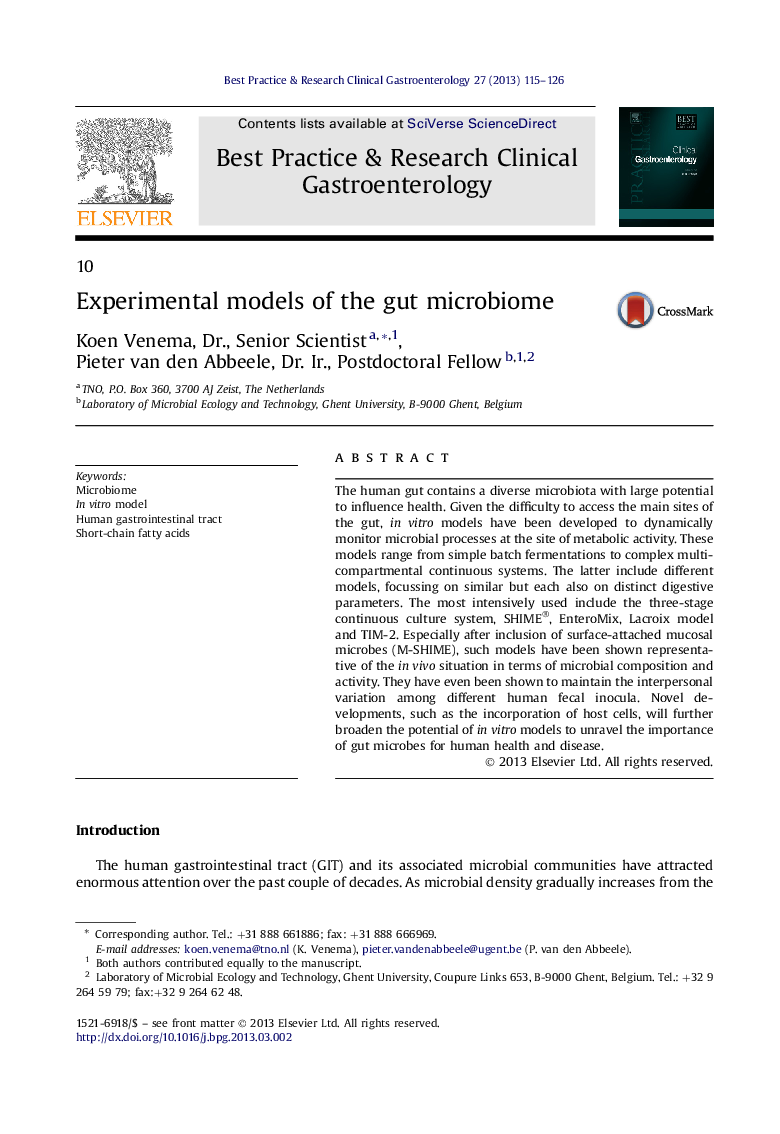| Article ID | Journal | Published Year | Pages | File Type |
|---|---|---|---|---|
| 6086372 | Best Practice & Research Clinical Gastroenterology | 2013 | 12 Pages |
The human gut contains a diverse microbiota with large potential to influence health. Given the difficulty to access the main sites of the gut, in vitro models have been developed to dynamically monitor microbial processes at the site of metabolic activity. These models range from simple batch fermentations to complex multi-compartmental continuous systems. The latter include different models, focussing on similar but each also on distinct digestive parameters. The most intensively used include the three-stage continuous culture system, SHIME®, EnteroMix, Lacroix model and TIM-2. Especially after inclusion of surface-attached mucosal microbes (M-SHIME), such models have been shown representative of the in vivo situation in terms of microbial composition and activity. They have even been shown to maintain the interpersonal variation among different human fecal inocula. Novel developments, such as the incorporation of host cells, will further broaden the potential of in vitro models to unravel the importance of gut microbes for human health and disease.
